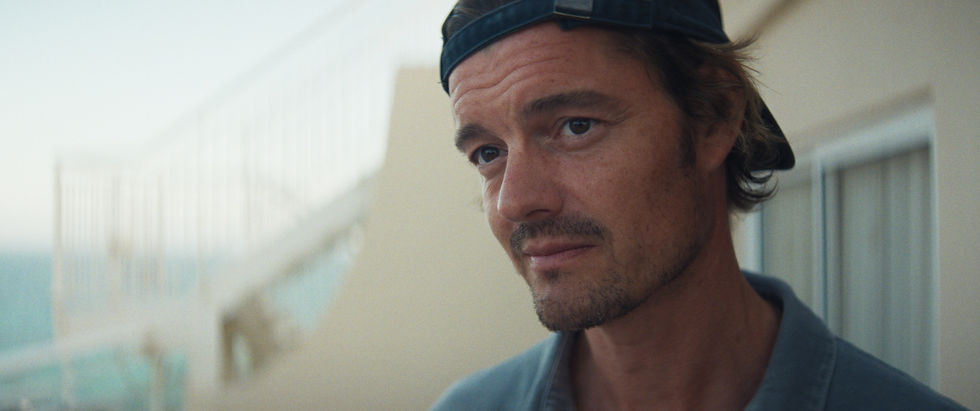EIFFEL
- Kathleen Bondar

- Aug 17, 2022
- 3 min read
Updated: Jan 29, 2023
DIRECTOR MARTIN BOURBOULON
SCREENWRITER: CAROLINE BONGRAND
CAST: ROMAIN DURIS; EMMA MACKEY; PIERRE DELADONCHAMP
FRANCE 2022/ SUBTITLES
CERTIFICATE 15; RUNNING TIME 108 MINUTES
https://youtu.be/W3vbWe7iZi4
Photos: Emma Mackey with Romain Duris (centre) in Eiffel.
REVIEW by KATHLEEN BONDAR
Director Martin Bourboulon admits that whilst sticking as closely as possible to fact, Eiffel is based on an assumption. Gustave Eiffel, the renowned French engineer played with virtuosity by Romain Duris (Divorce, French Style), forged ahead in constructing the Eiffel Tower which changed the face of Paris in 1889 after meeting Adrienne Bourges (Emma Mackey from Sex Education), the daughter of a Bordeaux dignitary. “We have no way of knowing for certain, but this is the only explanation we could find for Eiffel’s abrupt change of heart regarding the Tower project,” says Bourboulon.
Indeed, after returning from America with the successful interior construction of the Statue of Liberty under his belt, Monsieur Eiffel was more pre-occupied with designing the metro than a folly for the forthcoming World Fair. Therein lies the film’s parallel stories - Gustave Eiffel’s great love quests: the Eiffel Tower and Adrienne Bourges.
The film’s account of Adrienne Bourges is relatively simple. She is fiery. Adrienne has passionate moments (jumping off the bridge) and acts of defiance (impaling herself as she flees her domineering father). Despite professing interest in Eiffel’s book on engineering (which she clasps to her heart) to signify intelligence, she comes across as an impetuous love object proffering petulant retorts warranting Eiffel’s accusation that she’s a “spoilt brat”. Her role is to attract and spark Monsieur Eiffel and then sacrifice her love for the greater good of his career and the Paris landmark. Mackey fits the bill deploying her perfect French having grown up in Sablé-sur-Sarthe .
Meanwhile, Gustave Eiffel is portrayed as a moody, obsessive engineer with limited social skills who bursts with indignation at opposition, and there is plenty of that. And yet, he also plays a great romantic driven by a concealed, all-consuming love for Adrienne. It’s a tall order, but Duris manages and, at least, it gives his character more scope than the leading lady’s.
Bang in the middle of all the love confusion, Bourbulon conveys the ambitious nature of building the Eiffel Tower. It is some feat of engineering - the weight of the tower on waterlogged soil close to the Seine, lightning conductors, wind resistance, hydraulic engineering and pistons to balance the structure. To show the scale of the enterprise, Bourbulon uses computer generated VFX (visual effects) which has that odd Hollywood effect (zooming over great heights) on a fin de siècle scene. The film also gives a taste of the controversy engendered by the project. Local residents hate the tower. They think it’s ugly and a threat to life if it collapses. The Pope is against it because it overshadows the Notre Dame. Artists criticise the aesthetic. The press hound Monsieur Eiffel.
Bourbulon points out in his press release the interruption in filming due to the pandemic. This might explain the confusing sequence of events surrounding Gustave and Adrienne’s love affair if attention isn’t paid. At one point, Adrienne declares to her ferocious father she is marrying Gustave. It turns out she is already married. To complicate matters the film spans a few decades without noticeable markers. The characters don't age much.
It might also shed light on the different styles in the film. The first half is shot in dark sepia with silhouettes of bearded gents in top hats and demoiselles with bustles reminiscent of a Toulouse Lautrec bar scene. The next half of the film brightens up to resemble Claude Monet’s Luncheon on the Grass with delightful garden parties. Indeed, Eiffel is something of an Impressionist’s pastiche, bringing those oils to life visually albeit with exhausting energy.
@VertigoRel
#RomainDuris #EiffelFilm #EmmaMackey








